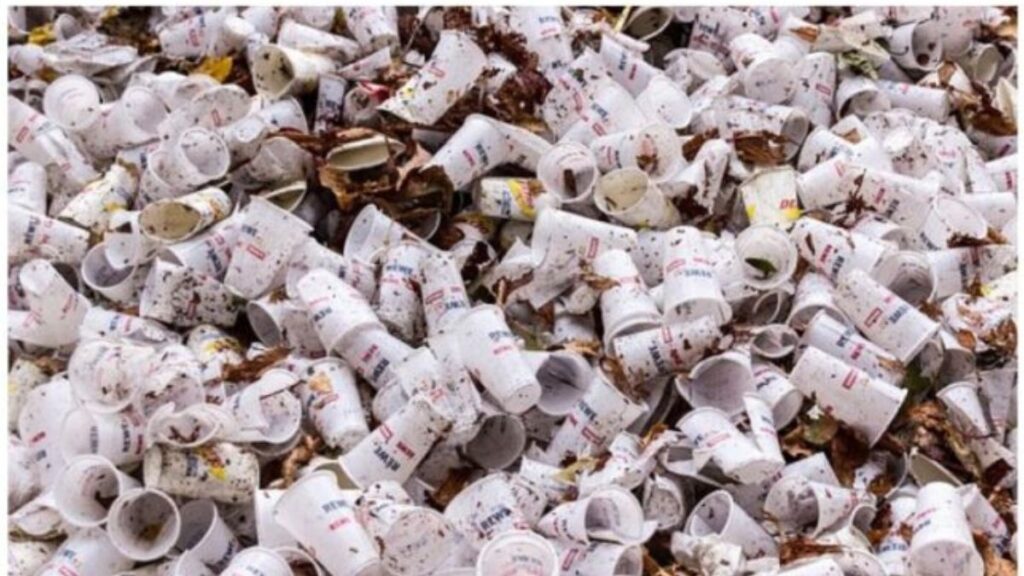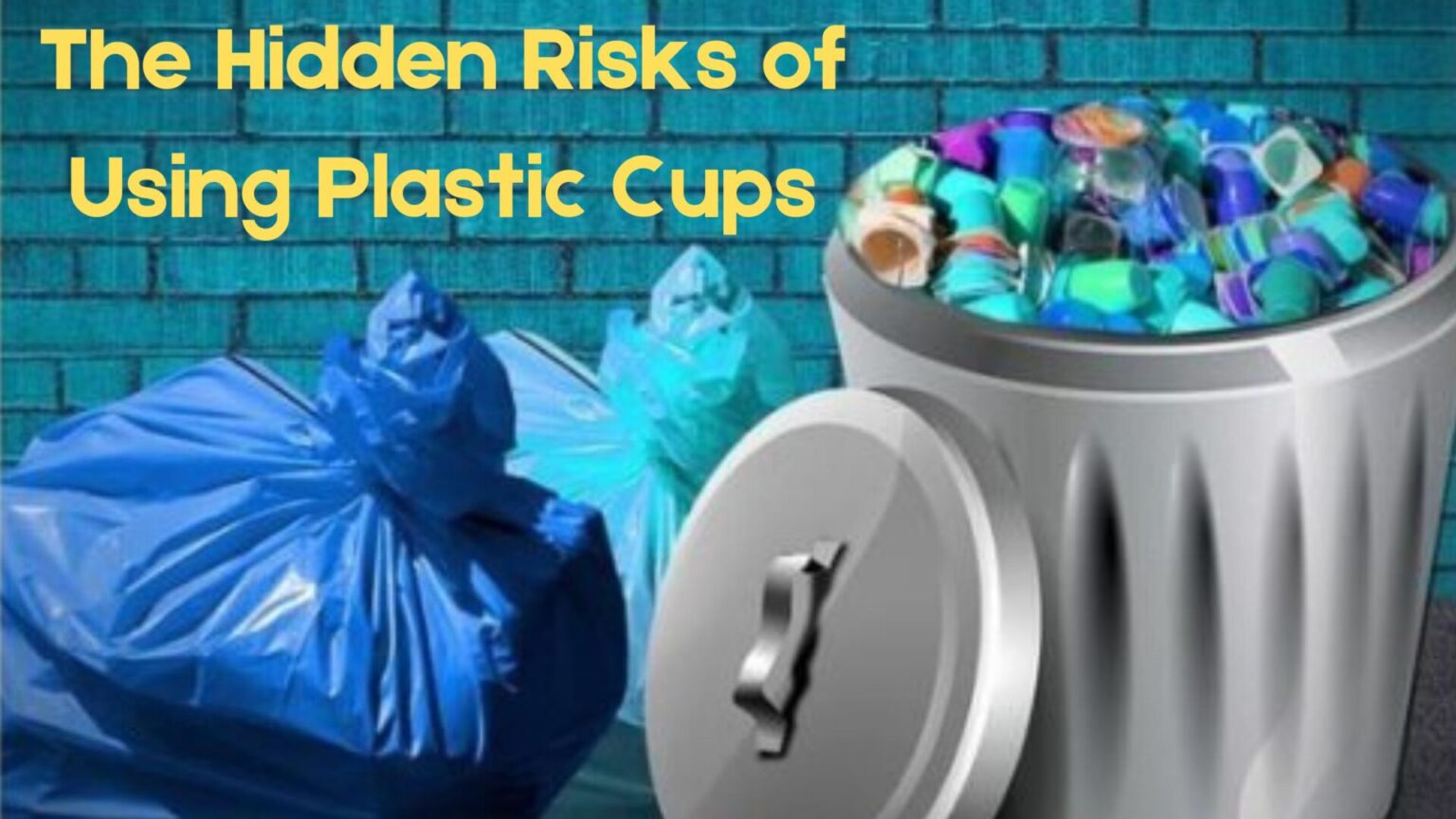Introduction:
Tea Lovers Beware: The Hidden Risks of Using Plastic Cups Unveiled

In the world of tea enthusiasts, the vessel from which you sip your favorite brew matters more than you might think. While the convenience of plastic cups may seem appealing, there’s a darker side to consider. In this article, we’ll delve into the risks associated with using plastic cups for your beloved tea ritual.
Is drinking tea in disposable plastic cups good for human health or environment?
Drinking tea in disposable plastic cups can have both health and environmental implications. Here are some considerations:
Health Concerns:
- Chemical leaching: Disposable plastic cups can contain harmful chemicals, such as bisphenol A (BPA) and phthalates, which may leach into the hot tea. These chemicals are known endocrine disruptors and can have adverse effects on human health.
- Temperature sensitivity: When hot tea is poured into plastic cups, especially if they are not specifically designed for hot beverages, there is a risk of heat-induced chemical leaching. Choosing cups specifically labeled as safe for hot liquids can help minimize this risk.
Environmental Impact:
- Single-use plastic waste: Disposable plastic cups contribute to the global issue of single-use plastic pollution. Plastics take a long time to break down in the environment, and improper disposal can lead to pollution of waterways and harm to wildlife.
- Resource consumption: The production of plastic cups requires the extraction of fossil fuels and energy, contributing to resource depletion and greenhouse gas emissions.
Recommendations:
- Choose alternatives: Consider using reusable cups made from materials like glass, stainless steel, or ceramic. These options are generally safer for both your health and the environment.
- Be informed: If you must use disposable plastic cups, choose those labeled as BPA-free and specifically designed for hot beverages. Avoid using cups that are not meant for hot liquids, as they may release more harmful chemicals.
- Dispose responsibly: If you do use disposable plastic cups, ensure they are properly recycled. Improper disposal can lead to environmental pollution. Additionally, reducing overall plastic consumption is a positive step.
In summary, while drinking tea in disposable plastic cups may be convenient, it’s essential to consider the potential health risks and environmental impact. Opting for reusable alternatives or choosing plastic cups specifically designed for hot beverages can help mitigate these concerns.
What plastic cups are safe to drink from?
When it comes to plastic cups, it’s generally recommended to choose those labeled as safe for food and beverages. Here are some guidelines for selecting plastic cups that are considered safer:

- BPA-Free Cups:
- Look for cups labeled as “BPA-free.” Bisphenol A (BPA) is a chemical commonly used in the production of plastics and resins, and it has been associated with potential health risks. Choosing BPA-free cups can help reduce exposure to this compound.
- Food-Grade Plastic:
- Ensure that the plastic cups are labeled as “food-grade.” Food-grade plastics are designed to be safe for contact with food and beverages. These plastics meet regulatory standards for materials intended to come into contact with food.
- Polypropylene (PP) or Polyethylene (PE) Cups:
- Cups made from polypropylene (PP) or polyethylene (PE) are generally considered safe for food and beverages. These types of plastics are less likely to leach harmful chemicals compared to some other types of plastics.
- Meets FDA Standards:
- Look for cups that meet the standards set by regulatory agencies such as the U.S. Food and Drug Administration (FDA). Compliance with such standards indicates that the plastic material has undergone testing and is considered safe for its intended use.
- Microwave-Safe and Heat-Resistant:
- If you plan to use the cups for hot beverages, make sure they are labeled as “microwave-safe” and are designed to handle heat. This helps reduce the risk of chemical leaching when hot liquids are poured into the cups.
- Avoid PVC (Polyvinyl Chloride) Cups:
- PVC is a type of plastic that may contain harmful chemicals, and it is not recommended for use in food and beverage containers. Look for cups that do not contain PVC.
It’s important to note that even with these considerations, using reusable alternatives like glass, stainless steel, or ceramic is often a safer and more environmentally friendly option. Reusable materials are less likely to leach harmful substances, and they help reduce the overall impact of single-use plastics on the environment.
How do I know if my plastic cup has BPA?
Determining whether a plastic cup contains BPA (bisphenol A) can sometimes be challenging because manufacturers may not always label their products with this information. However, there are a few general guidelines you can follow to assess the likelihood of BPA presence:
- Check the Recycling Code:
- Look for a recycling code on the bottom of the plastic cup. BPA is commonly found in plastics with the recycling code “7.” However, it’s important to note that not all plastics labeled with a “7” contain BPA. Some newer formulations labeled as “7” are BPA-free.
- Look for BPA-Free Labels:
- Manufacturers who produce BPA-free products often label them as such. Check the packaging or the cup itself for any information indicating that the product is free of BPA. Phrases like “BPA-free” or “No BPA” are commonly used.
- Read the Product Information:
- Review any product information, labels, or tags that accompany the plastic cup. Manufacturers may provide details about the materials used in the product, including whether it contains BPA.
- Contact the Manufacturer:
- If you’re unsure about the presence of BPA in a specific plastic cup, consider reaching out to the manufacturer directly. Customer service or product support may be able to provide information about the materials used.
- Choose Specific Plastics:
- Cups made from polypropylene (PP) or polyethylene (PE) are less likely to contain BPA. While this is not a guarantee, it may be a safer option.
- Avoid Polycarbonate Plastics:
- Polycarbonate plastics, which are labeled with recycling code “7,” are more likely to contain BPA. If you want to minimize BPA exposure, consider avoiding products made from polycarbonate.
Keep in mind that BPA may also be present in other everyday items, such as the lining of some canned goods or certain plastic food containers. If you are concerned about BPA exposure, choosing alternative materials like glass, stainless steel, or BPA-free plastics is a prudent option. Additionally, consulting with your healthcare provider for personalized advice based on your specific health concerns is recommended.
Conclusion:
Tea lovers, it’s time to reconsider the vessel that cradles your cherished brew. By understanding the risks associated with plastic cups, you can make informed choices that not only prioritize your health but also contribute to a healthier planet. Elevate your tea experience by opting for safer materials and embracing eco-conscious rituals. Your tea deserves the best, and so do you!
FAQs
Q1: What are the main health risks associated with using plastic cups?
A1: The primary health risks include exposure to harmful chemicals such as BPA (Bisphenol A) and phthalates, which can leach into beverages, especially when the cups are exposed to heat. These chemicals are known to disrupt endocrine function and are linked to various health issues, including hormonal imbalances, reproductive problems, and increased risk of certain cancers.
Q2: Are there any environmental risks linked to plastic cup usage?
A2: Yes, plastic cups contribute significantly to environmental pollution. They are often not biodegradable and can take hundreds of years to decompose, leading to severe plastic pollution in oceans and landfills. This pollution harms wildlife and ecosystems, as animals can ingest plastic debris, leading to injury or death.
Q3: How does the use of plastic cups affect marine life?
A3: Marine life is severely affected by plastic pollution. Plastic cups and other plastic debris can be mistaken for food by marine animals, causing ingestion that can lead to blockages in the digestive system, malnutrition, and death. Additionally, microplastics, which result from the breakdown of larger plastic items, can accumulate in marine organisms and potentially enter the human food chain.
References
- Environmental Health Perspectives – “Bisphenol A (BPA): Use in Food Contact Application”
- This article discusses the health risks of BPA, a common chemical in plastic cups, and its effects on human health.
- National Geographic – “Plastic Pollution”
- A comprehensive overview of how plastic pollution, including plastic cups, impacts the environment and marine life.






